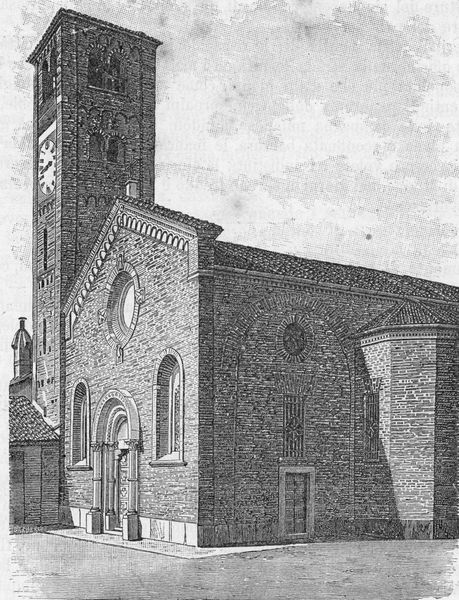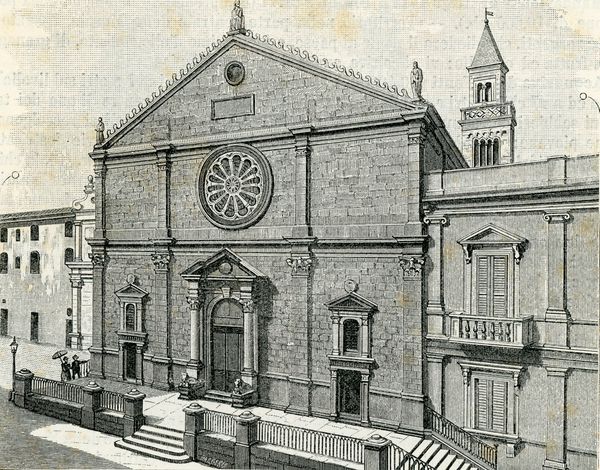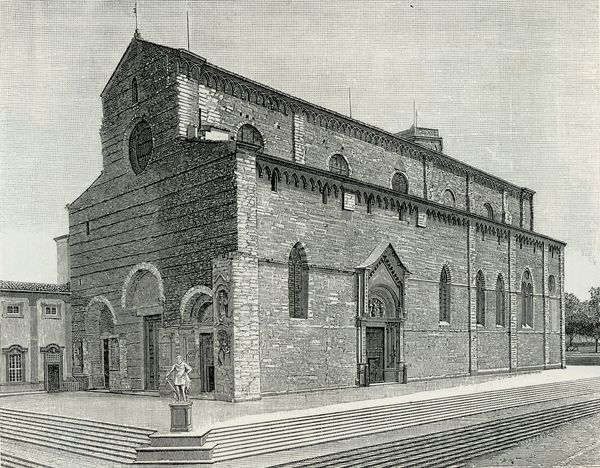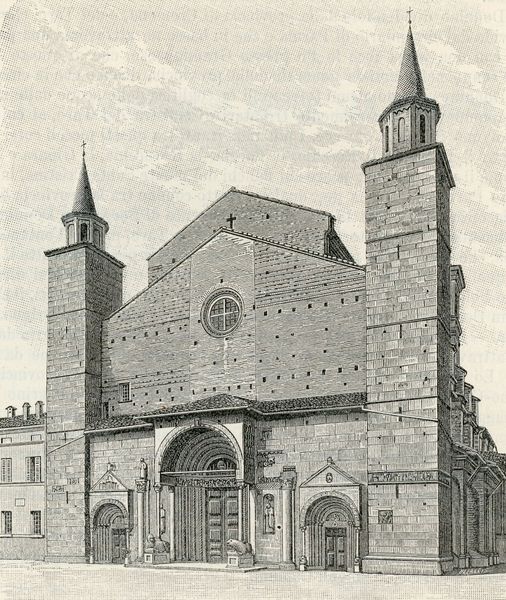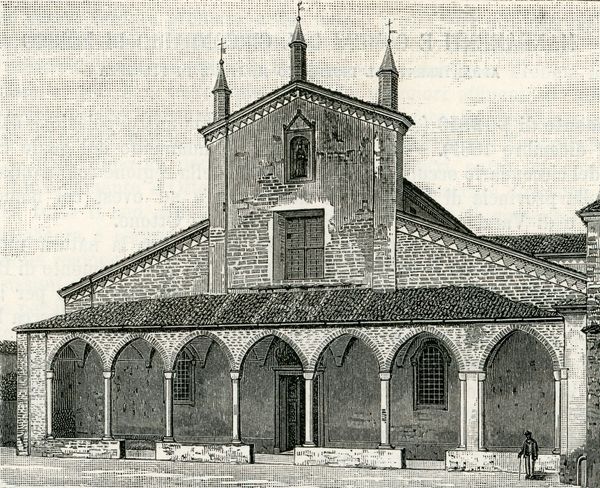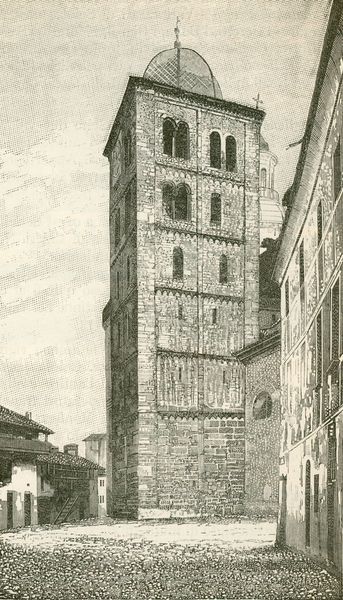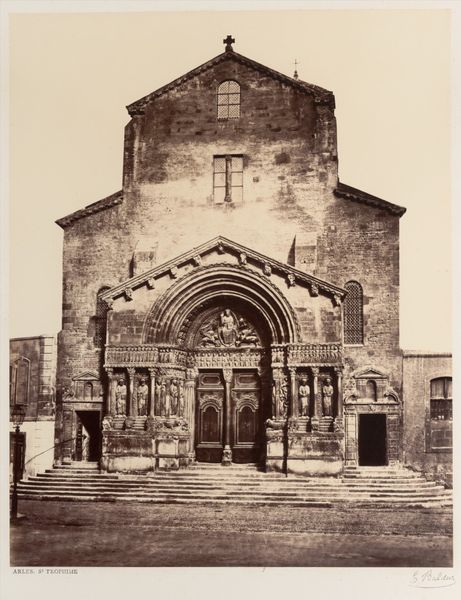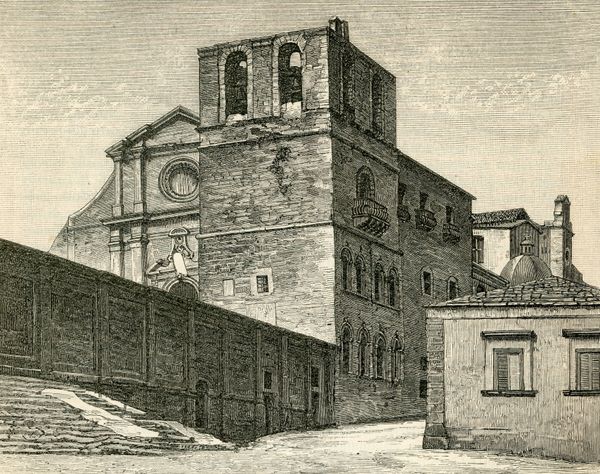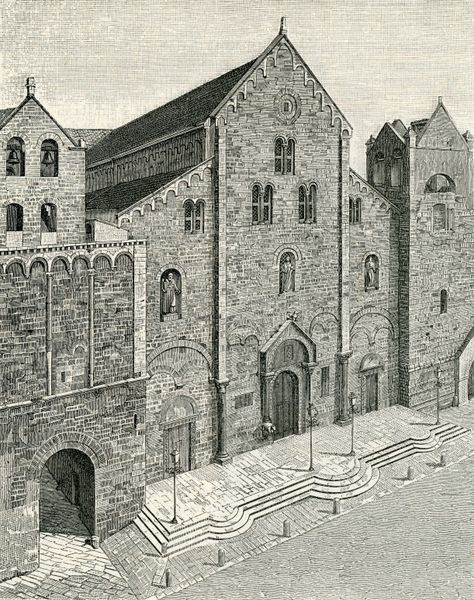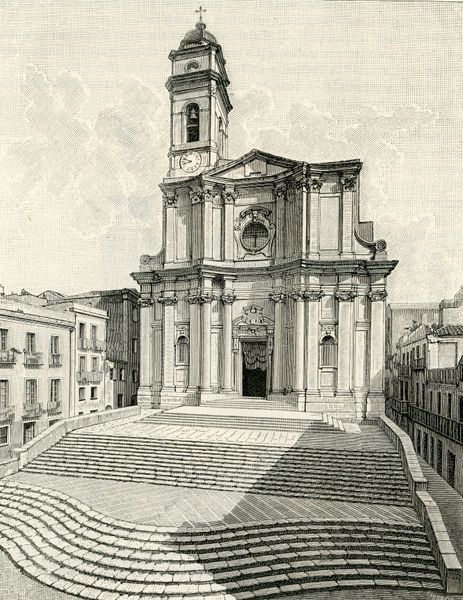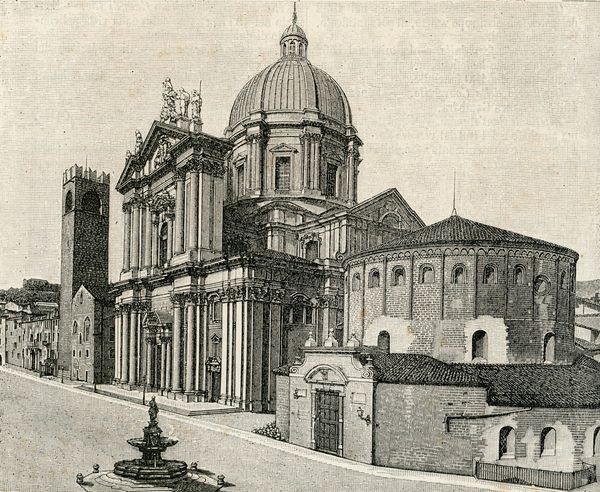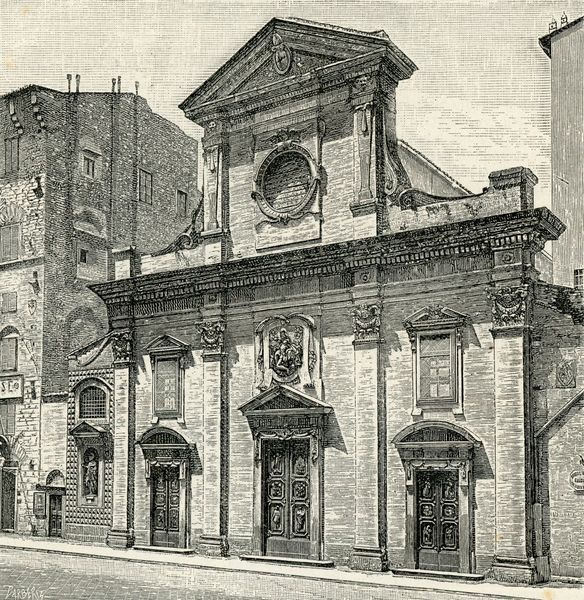
drawing, print, pencil, engraving, architecture
#
architectural sketch
#
scripture like structure
#
drawing
#
aged paper
# print
#
romanesque
#
site analysis
#
pencil
#
stylized text
#
architectural section drawing
#
architectural drawing
#
architecture drawing
#
cityscape
#
script guideline
#
engraving
#
architecture
#
historical font
Copyright: Public domain
Curator: Welcome. We’re standing before "Facciata Della Cattedrale," a print by Giuseppe Barberis, created around 1898. Editor: It's incredibly detailed. A real monumentality achieved through seemingly simple hatching and cross-hatching, mostly just pencil, ink or maybe even engraving, and probably aged paper... I wonder if this was a preliminary sketch, a record of a real building, or an exercise of imagination. Curator: The facade and structure certainly speak to the Romanesque style, a visual vocabulary deeply connected to religious and political authority of the medieval period. Notice the two prominent towers flanking the entrance—symbols of power, reaching towards the divine. Editor: Power derived from specific techniques and trades, of course. The cutting and laying of the stone itself was an intensely physical, laborious craft; consider the social ramifications, the amount of man hours this would require. And it’s meticulously captured here, every line feels intentional in its placement. Curator: Indeed, it evokes a sense of permanence, a steadfast belief system etched in stone, reflected in this… drawing or print? Notice also the rose window, that mandala of light, suggesting divine presence infusing the entire space. Editor: Yes, the facade is undeniably grand, but consider this a construction manual – not just a symbolic elevation of faith or religion, but the reality of architectural construction, where each precisely drawn line and calculated dimension directly influences labor and materials. Even that faded paper and ink play a role in interpreting how the building aged physically, over the long historical lifespan and usage by various hands involved to build such site. Curator: Perhaps that's where we find the tension. This work offers more than mere technical drafting or instructions. It captures the enduring aspiration toward transcendence embodied by such architectural marvels, their function is also representational of more immaterial yearnings. Editor: A perspective rooted in the tools, and resources, that gave this architectural aspiration form. The material and physical constraints give tangible context to those yearnings. I guess we could say it's architecture as work, as industry! Curator: A helpful materialist approach to the Romanesque language. It helps ground what could be a solely theological conversation into the lived experience of the builders. Editor: And I now appreciate, also, how symbols permeate that lived experience. Thanks.
Comments
No comments
Be the first to comment and join the conversation on the ultimate creative platform.

